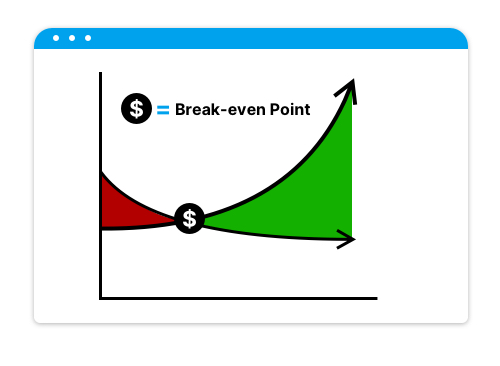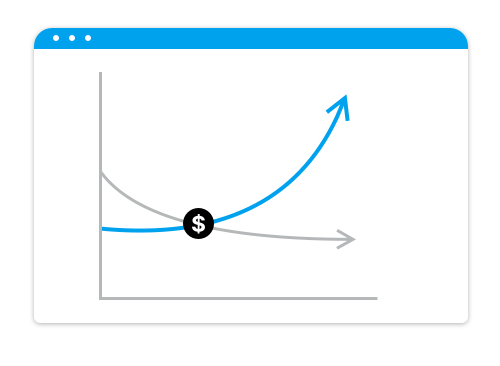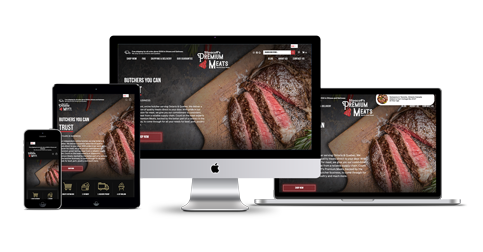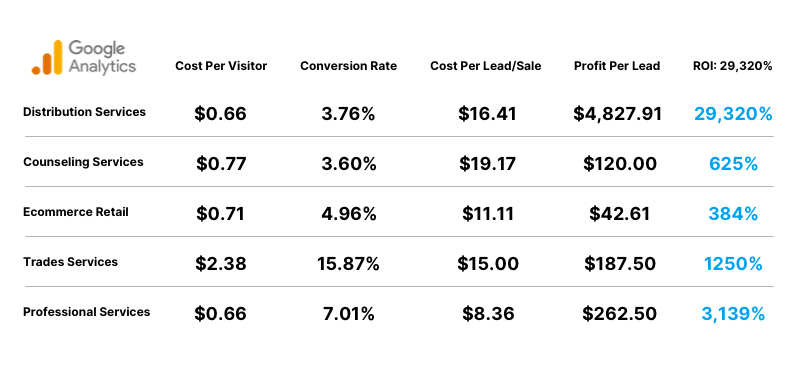
Create an Unfair Advantage by Turning Digital Marketing into Profits
If you’re looking for a better understanding of how to turn your digital marketing systems into PROFITS, then keep reading. This article contains easy-to-understand information that you can start applying to your business right away.
This is the information that most other agencies and digital marketers won’t teach you, and often avoid discussing like a politician that gets a question they don’t want to answer.
Why? Because then it actually holds them accountable to get you results, instead of sending you report after report of feel-good metrics like reach, impressions, shares, engagement and even rankings to some degree….
So what am I about to share with you?
- How to generate the metrics that MATTER
- Analytical strategies that LOWER YOUR RISKS and make you MORE MONEY

I am going to show you how to generate and understand the metrics that matter and analytical strategies that lower your risks and make you more money.
The goal is that you walk away with the motivation and confidence to understand that the ‘black hole’ of digital marketing isn’t magic. It is actually just a systematic process that can be easily understood and replicated from one scenario to the next.
It is also about transforming your mentality away from thinking about one customer to the next, and into the world of building assets that provide long-term value.
With respect to ‘building assets’, what I mean is:
- Attracting potential customers naturally
- Consistently turning digital advertising into profits
- Developing a 24/7 sales system that works, and can talk to multiple customers at one time
- Transforming your digital systems into an ASSET on your balance sheet, not an EXPENSE
- Creating a system that generates leads and/or sales for you, even when you are not working
These are just some benefits associated with successful digital marketing strategies that the majority of business owners will, unfortunately, never experience due to lack of motivation.
But before we dive into the 3 key concepts that will shape your business’ digital marketing campaigns, I want to get a couple of things straight.
This is not for those that are afraid to put in ‘the work’.
This is not for those that are afraid to spend money and want everything risk-free.
This is also not for anyone that is happy with the status quo and being average.
This is for you if you recognize the possibilities that the Internet can provide for your business, and you are interested in tapping into these opportunities.
What I can promise you is the relevant, applicable information you need to feel confident about approaching digital marketing in a manner that will give you the best chance for success.
Start looking to build systems, solutions & assets with a long-term mentality of sustainable growth, instead of, ‘how do I close the next job and collect the next cheque.’
Part 1. The ‘Big Picture’ Breakdown of Digital Marketing
Let’s start with the fundamentals.
Effective marketing accomplishes three things:
- It creates something of value
- It exposes the value it creates to those that might be interested
- It asks for something in return
For example, let’s assume that I’ve developed a new type of cola.
First, I need to make sure that it is something people will value. Easy, I say, it tastes good, and billions of people are already consuming cola.
Next, I need to make sure that those that are already consuming cola, who I presume will be most likely to try my cola, know about my product. I can either approach these people directly, which would be outbound marketing, or I could position my cola so that they discover it themselves naturally, which would be inbound marketing.
Outbound = I go to them, often considered to be ‘interruptive marketing’.
Inbound = They naturally come to me, because I’m positioned in all the right spots! This is New Age marketing.
Either way, once I have connected with a target customer, I ultimately want them to buy my product. One option is to simply say, “Would you like to buy Kyle’s Cola?” and I might sell to 1 out of 100 people. Or I could do this:
- Offer a free sample
- Tell them about the benefits (i.e. less sugar)
- Tell them the science of how it was created (i.e. reverse osmosis water + cane sugar)
- Why it’s the smart choice (less caffeine, same boost)
- Give them a 2 for 1 limited time offer
- Offer them a limited edition bottle
- Provide a money back guarantee
And guess what, I would probably make 40, 50 maybe even 60 sales to the same 100 people. But this isn’t a lesson in sales; it’s simply about being tactical.
Digital marketing is no different, nor more complex.
But as the above example outlines, a good conversion rate is a fundamental component of any marketing initiative, regardless of whether we’re talking about traditional marketing or digital marketing. By conversion rate I mean the percentage of users/customers who take the desired action i.e. buying my cola, filling out a form on a website, or making an online purchase.
In the digital marketing world, poor websites convert at less than 1%, just like poor sales pitches. Heck, some websites don’t even make the ask that I did when trying to sell my cola. They forget to have a call-to-action (CTA) altogether, meaning they aren’t telling the visitor what to do next. Well, guess what, that visitor is likely leaving your site and buying from a competitor.
On the flipside, great websites can often convert at 5, 10, 20 even sometimes 30%! The difference is, that the company with the higher conversion rate, can afford to spend more on the front end when it comes time to acquiring new customers, all the while making a better margin at the end of the day.
Essentially, all marketing boils down to is:
Good Product/Service (Value) + Advertise (Exposing it) = Sales $$ (The Ask)
With respect to digital marketing, you build a website that is focused on sales or lead generation, then you advertise it in order to attract visitors, maybe add some more value, and then you make the ask by telling visitors what you’d like them to do next.
Think of the last time you bought something. I bet you started your purchasing decision by doing some research online. In fact, a GE Capital Bank Report states that 81% of product and service purchases begin with online research.
Now, if you have any old website and a decent product/service, are people going to flock to you and beg you to take their money? No! That is simply the norm these days because everyone has some sort of a website…
Similarly, just because you’re able to make some sales, does that mean there is actually going to be anything left on the table (profits) to support your family? No! That depends on the magic combination of your cost of goods sold, advertising costs and top-line revenue.
Since your cost of goods sold is normally a fairly fixed variable, and your product/service’s pricing is likely set relative to the market, there is only one major wild-card remaining in the equation that will dictate your profits.
That wild card is your advertising costs.
So let’s talk about the digital marketing ROI formula. This is where the money is. And this is what most other digital marketers rarely talk about. In fact, I’m not even sure many of them think this way to begin with.
Part 2. A Simple 3 Step Formula to Calculate your ROI
My first piece of advice here is to think about the numbers before assuming you’ll be able to sell online profitably. There can be a lot of variables that make your cost of goods sold higher than you expect, as well as bring down your product/service’s top-line price.
Thus, you should be thinking very strategically, maybe even conservatively when evaluating the ROI of a particular campaign. As the old saying goes, “Fail to Plan, and Plan to Fail”.
The best part about this formula is that it can be used BEFORE you even spend a nickel on your first digital marketing campaign.
Even better yet, in most cases, this formula will allow you to scale your efforts and maximize profits. It’s similar to developing a killer sales pitch and sending out a salesperson to go sell. If he stays on script, he will always bring you back more money than he costs, it’s only natural to hire even more salespeople to go out and do the same thing!
What will you do next? Go hire more salespeople to do the same thing!
The same principle applies online. Except, it is much easier to ramp up a budget for your ad campaign than it is to hire and train more salespeople. After all, your website (or whatever your sales funnel consists of) can entertain multiple visitors at one time, so all you need to do is add more visitors!
Ok, so you get it, now here’s the Simple 3 Step Formula to calculate your ROI:
1. Determine a Customer’s Lifetime Value (LTV)

This figure will effectively serve as your breakeven point for your digital marketing campaign. If you can acquire new clients for less than your LTV, you’ll be profitable.
But wait, you say. My customer lifetime is often months or years long… (hosting companies, insurance, big box retailers, etc.)
In that case, pick a timeframe that you’re comfortable with for which you’re willing to make a short-term investment in order to make long-term gains, and recalculate your LTV so that you’re comfortable with the numbers. I’d recommend 3 or 6 months. This is the point in time where you’re looking to have the revenue line bust through the costs line, and you start generating profits!
2. Determine Your Customer Acquisition Cost (CAC)

Simply put, this is the cost to make a new sale with a new customer, or to acquire a new client if you’re in the service business.
If you aren’t a service company and you’re not using leads as your conversion point, then you can neglect the close rate, or set it equal to 1. If you are a service company, then you’ll need to consider that not every lead you get turns into a paying customer, unfortunately.
If you’re not doing any advertising, then your cost per visitor is zero, and this whole equation goes to zero. However, if you’re not advertising, you’re not capitalizing on maximizing profits, so start thinking about the potential of what you could be earning if you start investing in online advertising.
Lastly, you have your conversion rate. This is the number of visitors that take an action that has value to your business while on your website. It could be a new lead, a new sale, or it could even be a ‘soft sell’ like signing up for a webinar or downloading a free eBook. (like you just did)
To determine your conversion rate, ideally, you would just check your website analytics assuming you’ve got things set up properly. However, if you’re like most small businesses, you probably don’t. If you don’t have any data to go on, you can roughly estimate how many visitors out of 100 are buying or contacting you each month.
3. Calculate Your Profit

This is what you’re looking to maximize! Your profit is what’s left on the table at the end of the day in order for you to provide for your family.
If you’re the type of business owner who loves percentages and seeing your profits in a relative sense, like ROI (return on investment) then you can also consider the following ROI formula…
Magic, isn’t it?
I really want to drive home how important these simple formulas are to determining exactly how much you need to spend on digital marketing to start seeing higher profits for your business, so it’s time to apply them to a real-world example.
I’m now going to take you through a scenario I encountered with one of my clients to illustrate exactly how to apply all of the formulas we just discussed.
Part 3: Run Through A Real Example
Let’s assume you’re a roofing company.
Step 1: Determine Your Customer’s LTV
Average Revenue = $4,000 (including a mix of lower value repair jobs) Cost of Goods and/or Billable Time = $3,250
LTV = Average Revenue Per Client – Costs of Goods and/or Billable Time
LTV = $750 (since most customers only purchase once)
Step 2: Determine Your Client Acquisition Cost
Average Cost Per Visitor (from Google AdWords) = $3
Conversion Rate = 10% (this is generally well above average in this industry)
Close Rate = 70%
CAC = (Cost Per Visitor) / (Conversion Rate X Close Rate)
CAC = $3 / (0.1 X 0.7) = $42.86
Step 3: Calculate Your Profit
LTV: = $750
CAC = $42.86
Profit = LTV – CAC
Profit = $750 – $42.86 = $703.14
ROI (%) = (Profit– CAC)/CAC X 100%
ROI = ($703.14 – $42.86)/($42.86) X 100% = 1,540% ROI !
This is an impressive figure! So, how does this roofing company generate such an impressive ROI?
Affordable clicks. You have to spend money to make money, and if you’re scared about spending money on Google AdWords to get highly targeted traffic because you might waste a click on a competitor or a customer that doesn’t buy, then online advertising isn’t for you. Unfortunately for you, however, you would have missed out on some potential profits.
A good conversion rate. A good website builds trust and makes visitors feel comfortable. For this client, they combined mobile-friendly design, with good images, real client reviews & effective sales copy. The result is an increased willingness to interact with the business and follow through with that all-important CTA.
A good close rate. Again, 70% is probably above average, but completely attainable if you’re quick to respond to customers, friendly, and provide good value.
Note on proportionality: Companies with more complex backend systems and higher start-up costs often have fewer competitors and higher ROI. The opposite is also true for businesses with minimal barriers to entry; they generally have more competition and often see lower ROI.
I’m the type of person who is a firm believer in evaluating opportunities on a basis of Risk vs. Reward, so for me, this makes sense.
Businesses with Higher Risks, typically yield Higher Rewards.
So does it work out this well all of the time? No, in fact, a lot of companies spend more money than they end up making because they take shortcuts. They do not think like a business owner and make the investment into building assets.
Expanding on the above example, I want to provide you with some additional data from other clients we manage. While the above example is valuable in illustrating how to calculate profits and ROI, it does not give any added insight into the variation of the numbers for different types of businesses, in different industries. These numbers will be extremely useful for you when planning out your own digital marketing campaign.
Straight from Google Analytics, here are some of the numbers from clients our team currently manages:

*Cost per visitor takes into consideration the client’s total digital marketing spend, including all paid ad spends as well as fees paid to our agency for management and organic growth efforts related to search engine optimization, content marketing, etc.
These numbers should allow you to loosely predict how your campaign will perform, so you can plan things out properly.
Again, thinking like a business owner will translate into you making the logical decision to:
- Invest in a user-friendly website
- so you can maximize your conversion rates!
- Learn how to attract qualified traffic
- so you can minimize your cost per visitor!
- Spend the time developing the skills needed to obtain a high close rate
- so you can maximize revenue and profit margins!
At the end of the day, you’ll be walking away with a website that sits on your balance sheet in the assets column, ultimately adding value to your business.
And guess what!? Luckily for you, most business owners are not doing everything we’ve talked about today at a high level.
Why? Because the phone likely rang 10 minutes ago and they didn’t have the discipline and confidence to read this far. They jumped on the next opportunity to make a few hundred bucks and missed the opportunity to build a business asset that can easily become worth thousands, hundreds of thousands, or even millions of dollars depending on the scale of your business.
Now, what I want you to do next, is easy.
Walk yourself through the numbers if you haven’t already.
Now, stop dreaming and start DOING!
Think about the next steps, whether you’re confident in doing things yourself, or whether you should hire professional help. Either way, you’ll be on your way to making one of the best decisions you can make for your business.
Cheers to building a more profitable business!
Sincerely,
Kyle Smendziuk
CEO | WebMarketers
P.S. If you decide you could use some help, feel free to reach out to us. We’d love to chat about some of the solutions we offer and see if we’d be a good fit for each other!



